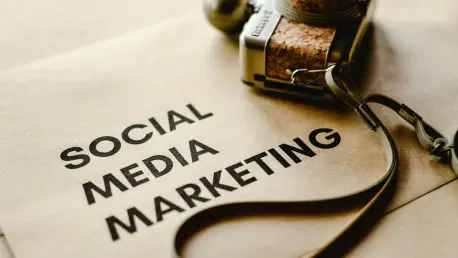In the ever-evolving landscape of digital advertising, influencer marketing has surged to the forefront as a powerful tool for brands seeking to forge genuine connections with their target audiences through authentic, relatable content on social media platforms. As consumer attention shifts away from traditional media like television and print ads, companies are increasingly funneling their marketing budgets into partnerships with influencers, who range from micro-creators with niche followings to mega-celebrities commanding vast online communities. This pivot offers unparalleled opportunities for engagement, but it also unveils a host of unforeseen challenges that can catch even the most experienced marketers by surprise. The very essence of influencer content—its unpolished, personal nature—while a key strength in building trust, often sidesteps the rigorous legal oversight applied to conventional campaigns. This gap exposes brands to significant risks, from copyright disputes to reputational damage, necessitating a deeper understanding of the pitfalls and strategic measures to mitigate them. As the influencer economy continues to expand, finding ways to balance creativity with caution becomes paramount for sustained success in this dynamic arena.
Navigating the Complexities of Influencer Partnerships
Unpacking the Legal Challenges
The legal terrain of influencer marketing diverges sharply from the structured world of traditional advertising, where every element of a campaign is meticulously vetted before release. Influencer content, often crafted spontaneously and independently, bypasses such scrutiny, heightening the likelihood of costly missteps. A seemingly innocuous post, perhaps featuring an unauthorized image or a casual comment perceived as offensive, can swiftly escalate into a legal claim. Copyright infringement stands out as a frequent issue, particularly with the misuse of background music in videos, where personal use agreements on platforms are mistakenly assumed to cover commercial purposes. Brands must grapple with the reality that a single oversight can lead to lawsuits or fines, tarnishing both financial stability and public perception. Staying informed about these potential hazards is the first step toward crafting strategies that protect against the unique vulnerabilities embedded in social media collaborations.
Beyond the immediate legal pitfalls, the rapid pace of content creation in influencer marketing adds another layer of complexity for brands to navigate. Unlike traditional advertisements that undergo multiple rounds of approval, influencer posts can go viral within hours, leaving little time to catch errors before they spiral into broader issues. Defamation, invasion of privacy, and violations of the right of publicity are among the recurring risks that surface when content lacks proper oversight. These challenges are compounded by the sheer volume of partnerships many brands manage, sometimes spanning thousands of influencers across various platforms. Without robust systems in place to monitor and guide content creation, companies risk facing a barrage of claims that could have been avoided with proactive planning. Recognizing the speed and scale at which these risks manifest is crucial for developing frameworks that prioritize both creative freedom and legal compliance in this fast-moving digital space.
Identifying Vulnerable Segments
Within the influencer ecosystem, not all creators carry the same level of risk, and brands must pay close attention to the nuances that differentiate various tiers. Mid-tier influencers, typically earning tens of thousands annually, often find themselves in a precarious position—they have outgrown the casual, low-stakes posting of hobbyists but lack the sophisticated risk management infrastructure of top-tier celebrities who employ dedicated teams. This group frequently operates without legal counsel or insurance, making them particularly susceptible to errors that can lead to significant fallout. A misstep by a mid-tier influencer, such as an unintended defamatory statement, can quickly draw legal scrutiny, leaving brands exposed to liability. Identifying these vulnerable segments allows companies to tailor their risk mitigation efforts, ensuring that resources are directed where they are most needed to prevent disruptions in their marketing campaigns.
Another critical aspect of managing risk lies in understanding the broader dynamics of accountability within influencer partnerships. While top-tier influencers may have the means to address claims through personal resources or professional support, smaller or mid-tier creators often do not, shifting the burden squarely onto the brands they represent. This imbalance means that companies must anticipate potential issues across all levels of their influencer networks, not just with high-profile names. The financial and reputational stakes are high when a mid-tier influencer’s oversight becomes a public relations crisis, as brands are typically the ones targeted in legal proceedings. Developing targeted guidelines and support systems for influencers at different career stages can help mitigate these risks, fostering a more secure environment for collaboration. Brands that invest in understanding these disparities are better positioned to build resilient partnerships that withstand the pressures of the digital marketplace.
Strategies for Effective Risk Mitigation
Shouldering the Financial Load
When legal challenges emerge from influencer content, the financial repercussions often fall heavily on brands rather than the creators themselves, creating a significant burden that must be addressed strategically. Many influencers, particularly those outside the elite tier, lack personal insurance or sufficient assets to cover claims, leaving companies to bear the costs of legal defense and settlements. This disparity is stark in cases where a brand faces lawsuits due to content it did not directly produce but is associated with through partnership. The reality is that brands are perceived as the deeper pocket in disputes, making them the primary target for litigation regardless of fault. Acknowledging this imbalance is essential for companies to prioritize protective measures, such as securing comprehensive coverage or establishing clear contractual obligations, to shield against the unpredictable nature of influencer-driven liabilities.
The scope of financial responsibility extends beyond immediate legal costs, impacting long-term brand strategy and resource allocation in influencer marketing efforts. When a claim arises, the expenses tied to resolving it—ranging from attorney fees to potential damages—can strain marketing budgets, diverting funds from other critical initiatives. Moreover, the reputational damage from such incidents can erode consumer trust, leading to indirect losses that are harder to quantify. Brands must consider these broader implications when assessing their exposure, recognizing that a single incident can have a ripple effect across their operations. Implementing preemptive safeguards, such as vetting influencer content or establishing crisis management protocols, becomes a vital component of financial planning. By anticipating these burdens and integrating risk management into their core strategies, companies can better navigate the fiscal challenges posed by the influencer economy.
Leveraging Tailored Insurance Solutions
As the influencer marketing landscape grows increasingly complex, innovative insurance products have emerged as a cornerstone for managing associated risks, offering brands a safety net tailored to this unique space. Specialized offerings, such as “The Influencer by QBE” from QBE North America, are designed to address the specific liabilities tied to social media campaigns, providing occurrence-based coverage that traditional media liability policies often fail to cover adequately. With features like a defined limit per campaign and streamlined claims management, these solutions ensure that both brands and influencers are protected against the fallout from content-related missteps. Such products represent a forward-thinking approach, acknowledging the distinct challenges of digital partnerships and filling critical gaps that could otherwise leave companies vulnerable to significant losses in this rapidly evolving field.
Equally important is the scalability of these insurance solutions, which cater to the diverse needs of brands managing anywhere from a handful to thousands of influencer relationships. The ability to customize coverage based on the scope and nature of campaigns allows companies to align protection with their specific risk profiles, whether dealing with micro-influencers or high-profile creators. Additionally, many of these tailored products go beyond mere financial safeguards by incorporating educational components, such as training modules for influencers on legal best practices. This dual focus on prevention and protection empowers brands to engage in influencer marketing with greater confidence, knowing that potential issues are addressed proactively. As the industry continues to expand, leveraging such specialized insurance offerings becomes an indispensable strategy for companies aiming to balance innovation with security in their digital endeavors.
Empowering Through Knowledge and Training
Education stands as a powerful tool in the arsenal of risk mitigation for influencer marketing, equipping both brands and creators with the knowledge to avoid common legal pitfalls before they escalate into costly disputes. Many issues, such as copyright violations or defamatory content, stem from a lack of awareness about the legal boundaries governing online content. By providing influencers with accessible training on topics like securing proper licenses for music or understanding the implications of privacy laws, brands can significantly reduce the likelihood of claims. Insurers that pair coverage with educational resources, including short modules or quizzes, play a pivotal role in fostering this awareness, creating a culture of responsibility within partnerships. This proactive approach not only minimizes exposure but also strengthens trust between brands and influencers, paving the way for more seamless collaborations.
The impact of education extends to enhancing the overall quality and compliance of influencer content, benefiting brands in both legal and strategic dimensions. When creators are well-versed in best practices, the content they produce is more likely to align with regulatory standards and brand values, reducing the need for extensive oversight or post-publication corrections. This efficiency can save time and resources, allowing marketing teams to focus on campaign creativity rather than crisis management. Furthermore, educated influencers are better positioned to act as true brand ambassadors, representing companies with integrity and foresight. Brands that invest in training initiatives, whether through insurer partnerships or internal programs, demonstrate a commitment to long-term success in the influencer space. By prioritizing knowledge as a preventive measure, companies can transform potential vulnerabilities into opportunities for building stronger, more sustainable digital relationships.
Reflecting on Past Lessons for Future Safeguards
Looking back at the trajectory of influencer marketing, it becomes evident that the shift from traditional advertising to social media-driven campaigns brought both unprecedented opportunities and significant challenges for brands worldwide. The rapid growth of the influencer economy reshaped how companies connected with consumers, prioritizing authenticity over polished messaging. Yet, this evolution also exposed a range of liabilities, from copyright disputes to privacy violations, which often left brands bearing the financial and reputational brunt of errors made by creators. Specialized solutions, like targeted insurance products and educational initiatives, proved to be game-changers in addressing these risks head-on. Moving forward, brands are encouraged to integrate these lessons into their strategies, adopting comprehensive coverage and fostering awareness among influencers to prevent future pitfalls. By building on past experiences, companies can focus on scaling their digital presence with confidence, ensuring that protective measures evolve alongside the ever-changing landscape of social media marketing.









